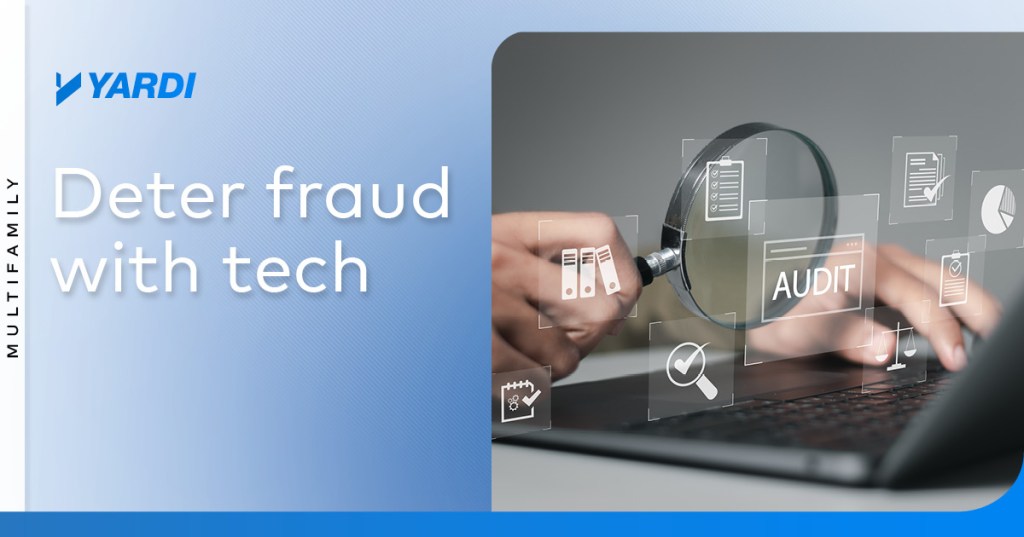The multifamily industry has long since been a lucrative target for fraudsters, and recent years have only made it worse. While online leasing has streamlined the leasing journey for many applicants, it has also opened the door for bad actors to manipulate the system, resulting in unpaid rent and bad debt for multifamily owners. The good news is that you can deter fraud from the very start. Read on to explore how technology can enhance security and efficiency across your online leasing process. The rise of real estate fraud Real estate crimes have increased each year since the pandemic. The FBI’s internet crime reports the total reported internet-based real estate crimes soared from $213 million in 2020 to a staggering $397 million in 2022. The multifamily industry was no exception, with many fraudsters taking advantage of the rising popularity of online leasing. According to the Pulse Survey conducted by NMHC, 93.3% of survey respondents reported experiencing fraud within the last 12 months with 70.7% seeing an increase in the same time period. Fraudulent documents have evolved to become increasingly complex. It is now more challenging to detect false applications without the help of technology. And in this digital age, relying on onsite teams to play detective is not practical or efficient. Combatting fraud with technology With the help of AI and automation, tech can detect fake IDs and altered paystubs instantly, stopping criminals who are trying to exploit the system. Of the options out there, consider a system that is easy to use, can easily be trained and can seamlessly connect to your property-level data. Overall, you want to choose tech that makes it not only easy for quality applicants to apply, but also creates an uninterrupted experience from prospect to resident. How fraud prevention tech can benefit everyone involved Implementing an automated screening solution is not just about preventing fraudulent applicants during the leasing process. It’s a proactive approach that can be integrated into various stages of your customer’s lifecycle. Easy touring. Enabling ID verification before in-person and self-guided tours enhances security before your prospect enters your community. It can also be used to manage resident visitor and vendor access, enhancing security within your communities. Faster leasing. If you implement a connected identity verification solution that seamlessly guides prospects into the applicant stage, prospects who have already verified their identity for a tour won’t have to repeat the process if they proceed with an application. This makes it frictionless for prospects to complete their application and streamlines the approval process for your staff. Staff efficiency. Using technology to automatically cross-check information and detect any inconsistencies that may indicate potential fraud is a huge game-changer for leasing teams. But the tech doesn’t stop at identity verification. You can also leverage automation to authenticate applicant incomes, further ensuring that your applicants are able to afford the rent. Not only does this decrease your staff’s manual workload, but it’ll also remove the burden of being detectives. Ongoing verification. Be sure to provide residents with access to a secure portal where they can update their information as necessary. This contributes to a seamless and secure ongoing resident experience. As the multifamily industry navigates the challenges posed by rising internet-related real estate crimes, technology emerges as both a solution and a deterrent. Online leasing, when coupled with robust ID and income verification solutions, accelerates the leasing process and strengthens the industry against fraud. Discover how Yardi’s screening and fraud solutions, ID Verify and Income Verification, simplifies screening for your staff and future residents. Dweck Properties saved up to 30 minutes per applicant during the application process. Want to see it for yourself? Watch this short on-demand webinar on how you can automate ID and income verification to make screening easier for your prospects, staff and...
Screening Strategies
Trends to Know Now
Along with changing the way we do almost everything, 2020 caused multifamily operators to re-think their marketing and leasing strategies — including applicant screening. While most businesses have pivoted to online services and are seeing benefits including reduced operational costs, online resident screening requires some attention to ensure quality renters are selected and risk is minimized. The latest webcast of The Executive Brief series, Emerging Trends & Strategies in Resident Screening, tackles this very issue. In this session Patrick Hennessey, Yardi’s vice president overseeing ScreeningWorks Pro, talks to Sarah Ogelsby-Battle, president of residential at Beztak and Jennifer Hayward, vice president of transition management at Pennrose, about how they’ve adjusted their resident screening strategies during the pandemic and for the future. From national trends in apartment application data to fraud prevention, these industry pros share insights to help guide multifamily screening practices in 2021 and beyond. National Rental Application Trends While screening volumes were at a historic low from mid-March to mid-May in 2020, after reaching normal volumes by the end of May, the industry saw a spike with higher-than-ever volumes in July, August and September. According to Hennessey, “Not only did most of the people who weren’t in the rental market in March and April re-enter, but we also saw additional people entering the market.” Hennessey pointed out a few other interesting trends in rental applications including how and when they’re being submitted. “One of the interesting things we observed as things went virtual and people were doing self-guided tours and applying online, is we’ve been seeing fewer and fewer screenings on weekends and into Mondays, and a spike in screening and leasing activity on Tuesdays, Wednesdays and Thursdays.” He added that some clients have restructured their on-site team schedules as a result. With...


